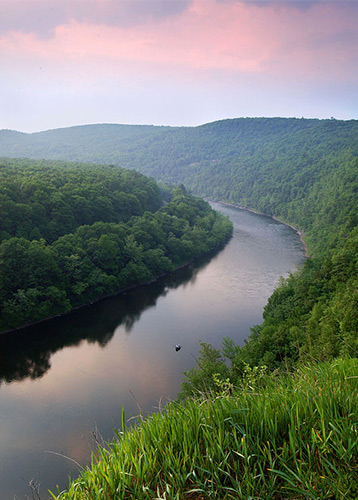STOP hazardous ethane on our railways – comment deadline midnight today, Feb. 21
Ethane Alert! More Dangerous Fracked Gas Liquid on our Railways?
Please say no to moving this hazardous flammable gas in rail tank cars by Feb. 21!
The Pipeline and Hazardous Materials Safety Administration (“PHMSA”) is taking comments on an application by a company to transport ethane in rail cars. This is not currently allowed due to public safety issues, similar to the hazards posed by liquefied natural gas (LNG) trains (a.k.a. “bomb trains”).
You can submit your comment directly to PHMSA here: https://www.federalregister.gov/documents/2023/01/25/2023-01455/hazardous-materials-notice-of-application-for-special-permit-extension-of-comment-period#open-comment
All submissions must include the agency name and docket number (PHMSA-2022-0081) at the beginning of the comment.
Gas Innovations has applied for a Special Permit that would authorize the transportation of cryogenic ethane in substandard rail tank cars, like the ones industry proposed for LNG (DOT-113C120W9 and DOT-113C120W). We must nip this in the bud by telling PHMSA to deny the application; we won’t stand for the intolerable risk to communities and the environment posed by this hazardous flammable cargo!
Want some tips for your comment?
- Ethane is a hazardous natural gas liquid produced by fracked wells and processed by chilling to -194 F under great pressure. “The more the temperature of the gas has to be lowered to reach its liquid state, the greater the number of technical challenges that arise to cool and transport it, making ethane one of the more technically difficult gasses to ship.”1 It is extremely flammable, can ignite with just a spark; burns too hot to extinguish; can cause severe freeze burns when first released to the air; may displace oxygen and cause suffocation; hugs the ground if released, doesn’t readily dissipate to the air, and can travel far distances; and can explode if heated, such as in a pool fire.2 Transporting by rail tank cars never tested or used for ethane recklessly endangers all in proximity. The hazards are similar to liquefied natural gas (LNG).
- Unsafe rail cars: the proposed rail tank cars have never been used or tested for ethane transportation. These cars must be proven safe for this use through comprehensive safety and reliability testing and technical review and analysis of tank performance with ethane as cargo. We know these cars are not safe for LNG and pose similar unmitigatable public safety threats. PHMSA itself acknowledges significant gaps in safety and environmental data necessary to support LNG by rail.3
- An applicant for a special permit is required to demonstrate that the “special permit achieves a level of safety at least equal to that required by regulation, or if a required safety level does not exist, is consistent with the public interest.”4 Gas Innovations bases its justification for the special permit on PHMSA-2018-0025, also known as the “LNG by Rail Rule.”5 On November 8, 2021, PHMSA proposed the suspension of this rule based on unresolved tank car safety issues.6
- The lack of specificity in the application hides the actual locations from the public, including the communities that will be most at risk. The one location that is specific in the application is the stated origin point, Marcus Hook, PA, an environmental justice community located next to Chester, PA, a densely populated city likewise mapped as an environmental justice community by the U.S.E.P.A. Additional environmental and public safety burdens are unjust. DOT Order 5610.2C,7 requires that agency actions (PHMSA) “ensure that disproportionately high and adverse effects on minority or low-income populations are identified and addressed.”8 The Order also directs DOT to make information concerning the “human health or environmental impacts” of activities publicly available.9 PHMSA is required, per the DOT policy, to take substantive steps to avoid disproportionately high and adverse effects on minority populations and low-income populations.10 The application lacks information needed to implement the Order.
- Lack of essential information, no EIS: the application merely states the trains would go from Marcus Hook, PA, to rail stations “near petrochemical or LNG liquefaction facilities” that are “along Gulf Coast, Mexico, and Canada.” The scant information available doesn’t meet the basic PHMSA requirements to illustrate the potential impacts of the special permit and prove it meets the same level of safety as regulations require or is consistent with public interest.
- There is no mention of the requirement for a National Environmental Policy Act (NEPA) process but NEPA is required under federal law. NEPA requires the agency to “consider and disclose” the environmental effects of actions such as this special permit. If NEPA and an environmental impact statement were not performed, the special permit approval would violate federal law.
LINKS to Federal Register Notice and helpful comments already submitted:
- Federal Register public notice
- Gas Innovations Application
- EarthJustice Submitted Comments
- DRN Submitted Comments
Thank you for taking action!
[1] Id.
[2] See Safety Data Sheets: Linde, Ethane Safety Data Sheet P-4592, Rev. Feb. 7, 2022, https://www.lindeus.com/-/media/corporate/praxairus/documents/sds/ethane-c2h6-safety-data-sheet-sds-p4592.pdf?la=en (last visited Jan. 4, 2023); DCP Midstream, Safety Data Sheet: Ethane, rev. Oct. 19, 2006, https://www.dcpmidstream.com/getattachment/Safety-Sustainability/Operating-Safely-and-Reliably/Ethane.pdf.aspx (last visited Jan. 4, 2023).
[3] Hazardous Materials: Suspension of HMR Amendments Authorizing Transportation of Liquefied Natural Gas by Rail, 86 Fed. Reg. 61,731, 61,736 (proposed Nov. 8, 2021) (to be codified at 49 C.F.R. Part 172)
[4] 49 C.F.R. § 107.105(d). See also id. § 107.113(f)(2).
[5] Hazardous Materials: Liquefied Natural Gas by Rail, 85 Fed. Reg. 44,994 (July 24, 2020) (codified at 49 C.F.R. Parts 172, 173, 174, 179, & 180) (hereinafter, “LNG by Rail Rule”).
[6] Hazardous Materials: Liquefied Natural Gas by Rail, 85 Fed. Reg. 44,994 (July 24, 2020) (codified at 49 C.F.R. Parts 172, 173, 174, 179, & 180) (hereinafter, “LNG by Rail Rule”).
[7] U.S. Dep’t of Transp., Order 5610.2C (May 14, 2021), https://www.phmsa.dot.gov/sites/phmsa.dot.gov/files/2021-06/DOT%20Order%205610.2C.pdf.
[8] Id. ¶ 5(b).
[9] See id. ¶ 6(b)(ii).
[10] See id. ¶ 8.




